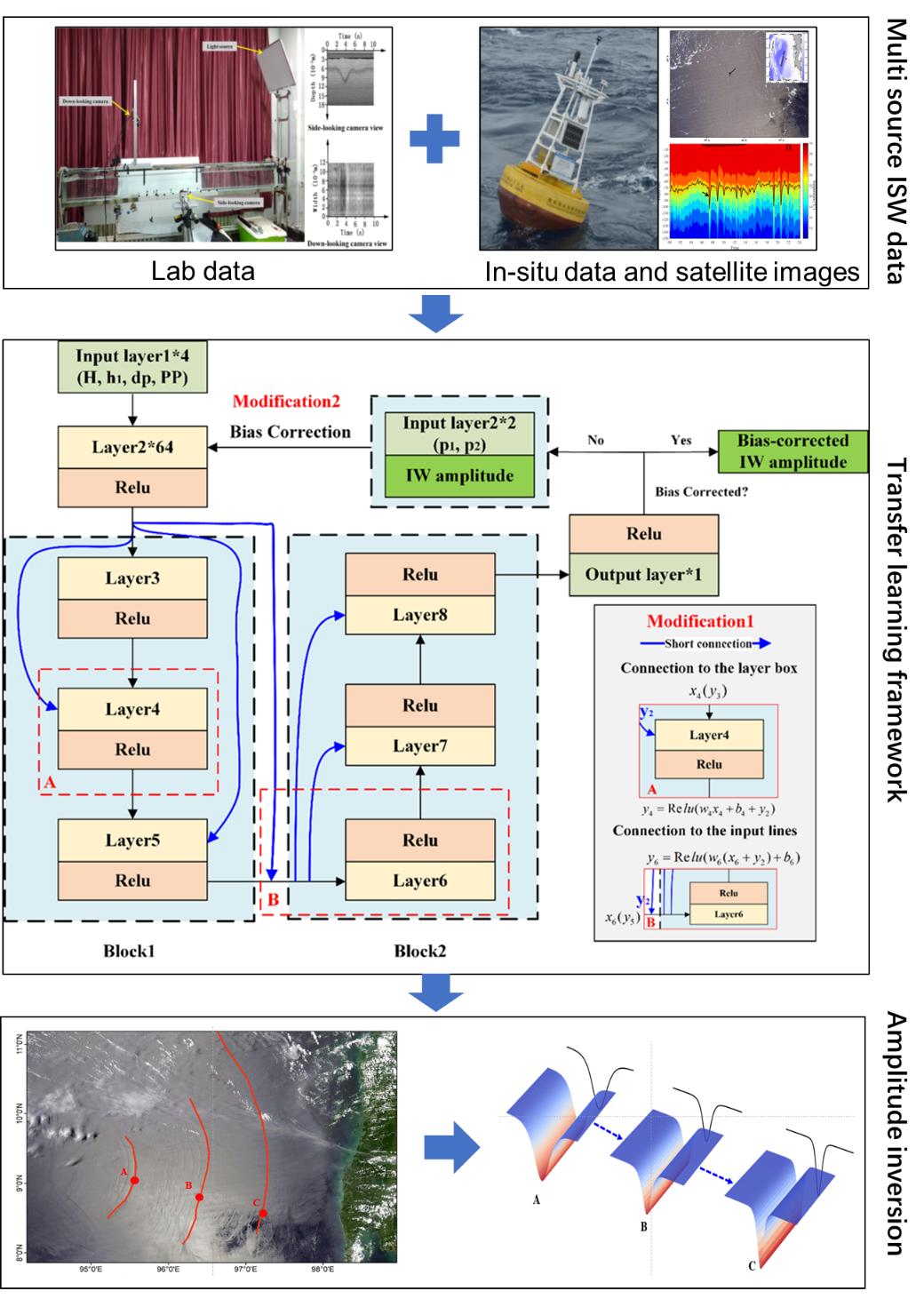Internal waves (IW) are widely distributed in the global ocean area, and the amplitude can reach hundreds of meters, affecting the ocean environment.
Remote sensing is a crucial method for observing internal waves in the ocean. However, inversion of internal wave amplitudes from remote sensing images is not available.
Recently, a research team led by Dr. LI Xiaofeng from the Institute of Oceanology, Chinese Academy of Sciences (IOCAS), applied artificial intelligence (AI) transfer learning techniques to integrate data from laboratory, buoy, and remote sensing to study internal waves.
The study was published in Remote Sensing of Environment (impact factor 10.164) on Feb. 9.
Researchers apply in-situ and remote sensing data to establish a matched dataset for model training, and innovatively use AI transfer learning techniques to solve different data source problems and accurately reconstruct the three-dimensional structure of internal waves.
The AI transfer learning-based ISW (Internal solitary wave) amplitude inversion model is a two-stage model. In the first stage, transfer learning was applied to deal with different internal wave data sources. A tailored modification inspired by the ResNet called short connection was introduced. In the second stage, the model bias-corrected the results of the first stage by using density information of the actual oceans.
"The model can inverse the internal wave amplitude by taking satellite image extracted information as input, the three-dimensional structure of internal waves can be reconstructed," said Dr. LI.
Study results demonstrate that developing inversion models for complex marine phenomena based on pure data-driven ocean information big data is reliable and feasible.
"As a booming emerging technology, AI technology can establish fast and direct mapping relationships in studying complex marine phenomena, it is an efficient tool and method for complex marine phenomenon research and remote sensing information mining," said Dr. LI.
This study was funded by the Ocean Science Research Center of the Chinese Academy of Sciences, the Leading Science and Technology Project of the Chinese Academy of Sciences, the major innovation projects of Shandong Province, and the National Natural Science Foundation of China.

AI transfer learning-based ISW amplitude inversion model
Zhang, X., Wang, H., Wang, S., Liu, Y., Yu, W., Wang, J., Xu, Q. & Li, X. (2022). Oceanic internal wave amplitude retrieval from satellite images based on a data-driven transfer learning model. Remote Sensing of Environment, 272, 112940.
ZHANG Xudong
Institute of Oceanology
E-mail: zhangxd@qdio.ac.cn
(Editor: ZHANG Yiyi)
|
|

Address: 7 Nanhai Road, Qingdao, Shandong 266071, China
Tel: 86-532-82898902 Fax: 86-532-82898612 E-mail: iocas@qdio.ac.cn


